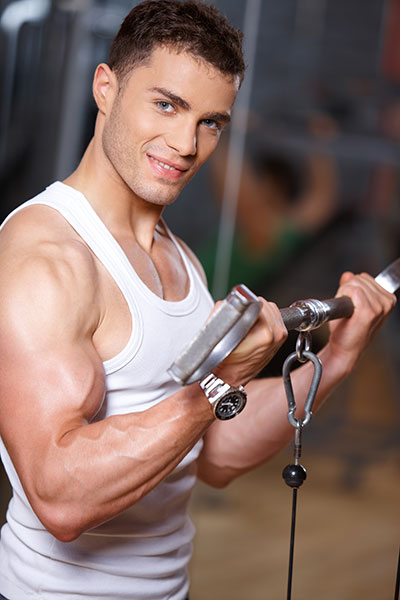We all know that working out is beneficial for your overall health. Exercising lowers heart attack risk and prevents other issues like obesity and diabetes, etc. But how do you know if your workouts are paying off or if you are working out hard enough?
It is definitely not sweat or sore muscles!
Many people think sweat is a good indicator of a good workout. That is not the case because not everyone sweats profusely. Sweating varies for each individual. It depends upon your hydration level, genetics, temperature, and the type of workout you are doing.
Sore muscles on the other hand are generally noticed when you start a new workout program. However, it is not an indication that you have worked out hard enough. Muscle soreness is a sign of getting stronger, but it will disappear as soon as your muscles adapt to a new exercise routine.
Some more obvious signs that your training has been hard and you have pushed your body to its limits are you being out of breath, your heart pumping out of your chest, and you absolutely have no energy for another set or rep. However, here are a few more indicators to gauge if you are working out hard enough.
The talk test
Try the talk test next time you are wondering whether your workout is working or not. If you find it difficult to speak mid-workout or tend to answer in short one to two-word grunts, as opposed to complete sentences, then it means you are working out at least moderately hard.
You are able to recover efficiently
you are out of breath, following which recovery should be fairly immediate, leaving you ready to continue your exercises. If you have trouble recovering, you are exerting too much.
You hit your number
An accurate way to define intensity of a workout is to determine what your maximum is and work at a percentage of that. For any cardio you will want to know your heart rate max which you can calculate using the formula – 206.9 – (0.67 x age). You will need to work out at an intensity of 80 to 90 percent of your max. For resistance training, finding your one-repetition max (maximum amount of weight that a person can possibly lift/push for one repetition) and doing three sets of five to eight reps at 80 to 90 percent of that limit.
You struggle to finish the last rep
Ideally, the final few reps should be a real effort, which is a sign of muscle fatigue. So, if you are struggling with the last two reps and still pushing yourself then you have had a successful workout session.
You are all invigorated, not wiped out
When you finish an effective workout, you should feel that you pushed yourself, but you shouldn’t be so drained that you are depleted – a good workout will leave you feeling like you still have energy to take the day on.
Your muscles pump
After a strenuous workout especially resistance training session, excess blood is pumped to the muscles you just worked to bring in oxygen and nutrients and wash out metabolic by-products (like lactic acid) and toxins. This causes the muscles to swell and temporarily become larger. This effect lasts for about two hours.
You sleep soundly
After a good workout, you should sleep soundly without any disruptions in the night. This has to do with the hormones and proteins released into your system during exercise that react to regulate sleep.
You notice changes in your body
Ultimately, you are working out hard enough if you see positive responses from your body. The first and most important change to measure is your strength. If you get stronger all your body composition and athletic goals have a greater chance of being achieved and maintained. You will also feel great and have more energy.



